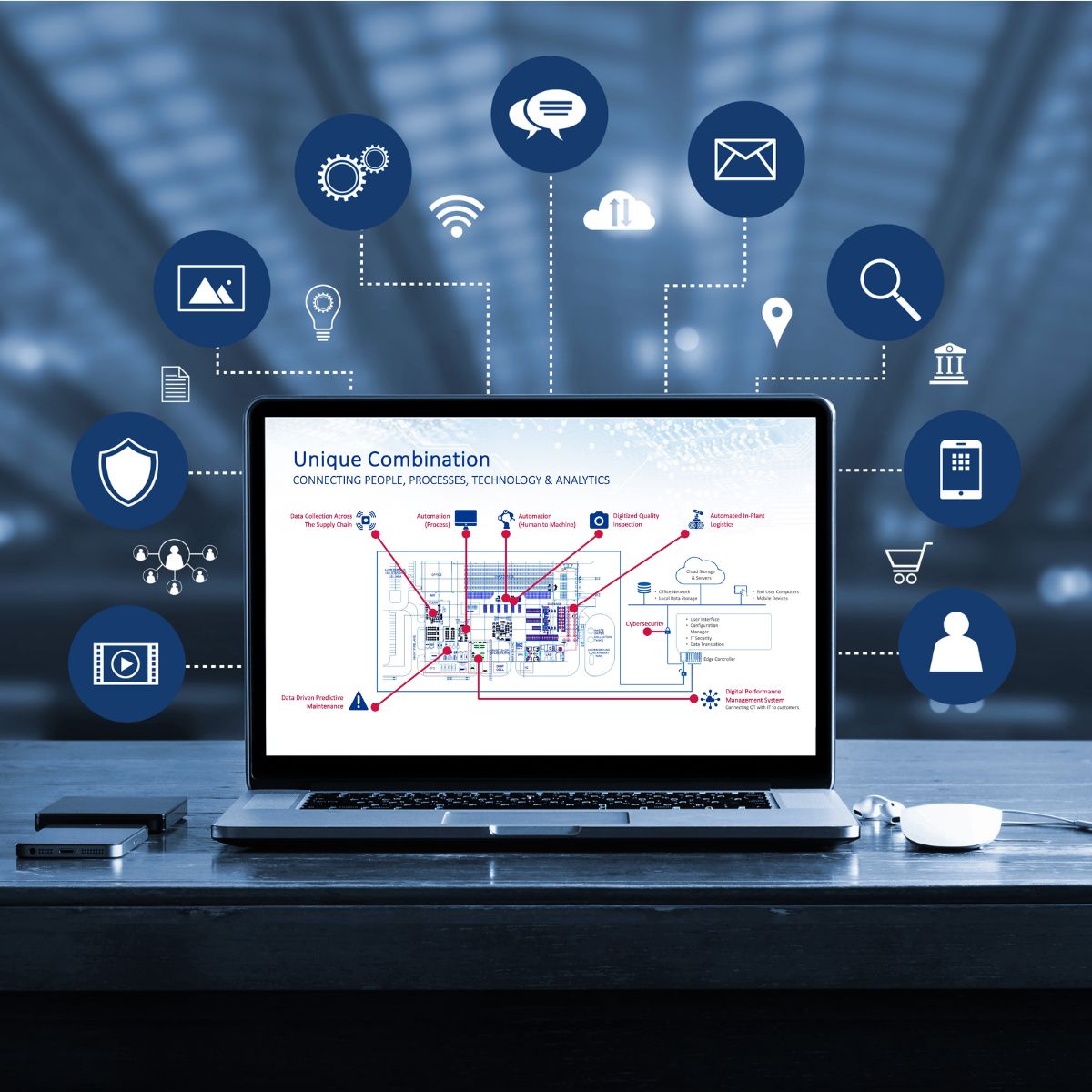Embracing technology to enhance efficiency, streamline processes, and stay competitive is vital for companies aiming to thrive in the digital age. However, the journey towards digital transformation can be thorny, and missteps can often lead to setbacks. In a recent Automation World article, GAF shared their Digital Transformation Lessons in their quest to create Factory of the Future. Reflecting on their experience, here are 7 valuable lessons manufacturers can learn from the mistakes made along the way:
#1 Rules Before Tools
One of the foundational lessons learned is the importance of establishing robust processes before implementing tools. Simply deploying a new technology without a clear understanding of the underlying processes can result in chaos rather than efficiency. Customizing tools excessively or neglecting to align them with existing workflows can lead to frustration and resistance from users.
#2 Understanding Infrastructure Requirements
Ignoring the infrastructure needs, both human and digital, can impede the effectiveness of new tools. For example, if your plant has inadequate Wi-Fi, chances are your digital transformation will be hindered before it even starts. Ensuring that the environment is conducive to leveraging technology is essential for successful implementation.
#3 Balancing Priorities
Conflicts between day-to-day operations and technological advancements are inevitable. Any new tool introduced must seamlessly integrate with existing processes and contribute to the core objectives of the business. Failing to align technological initiatives with operational priorities can result in resistance and hinder adoption.
#4 Cultural Shift to a Digital Mindset
Digital transformation is not just about adopting new tools. It requires a fundamental shift in mindset and culture. Employees must transition from traditional ways of working to embracing data-driven approaches to problem-solving. Changing perceptions and encouraging a culture of innovation are critical for driving sustainable digital transformation.
#5 Eliminating Outdated Practices
Holding onto outdated tools and processes can hinder progress and inhibit adoption of new technologies. Knowing when to phase out legacy systems and replace them with modern solutions is crucial. Allowing old practices to linger can create confusion and resistance among users, ultimately hindering the transformation efforts.
#6 Setting Realistic Expectations
Clear communication regarding the nature of the tools being deployed is essential to manage expectations effectively. Whether it’s a minimum viable product (MVP) with planned iterations or a stable application with a long-term roadmap, users need to understand what to expect. Transparent communication can prevent disillusionment and foster acceptance of the new tools.
#7 Comprehensive Change Management Plan
A robust change management plan is indispensable for navigating the complexities of digital transformation. Understanding user needs, providing adequate support, and fostering a culture of continuous improvement are central to successful change management. Incorporating feedback mechanisms and creating environments for testing and experimentation can help refine processes and enhance user experience.
Digital transformation is a journey rife with challenges and opportunities. By learning from the mistakes of others and embracing these seven lessons, organizations can navigate the complexities of transformation more effectively.
